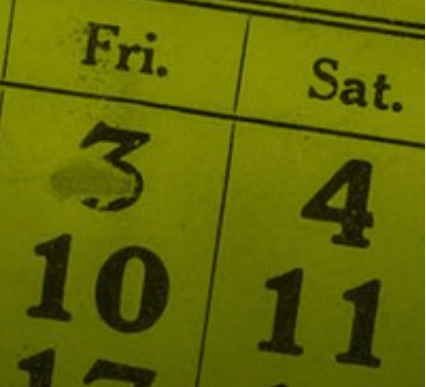31 March: On this day in history
What events happened on 31 March in history? We round up the events, births and deaths…

31 March 1492
Isabella of Castile and Ferdinand of Aragon issued the Alhambra Decree ordering the expulsion of all Jews from the kingdom of Spain and its territories by the end of July.
31 March 1631
English metaphysical poet John Donne died aged 59 at St Paul's where he had been dean since 1621. It was the tenth birthday of Andrew Marvell, another metaphysical poet.
31 March 1732
Austrian composer Joseph Haydn is born in Rohrau.
31 March 1763
HMS Defence was launched at Plymouth dockyard. The third rate, 74-gun ship of the line saw action at St Vincent, the Glorious First of June, the Nile and Trafalgar, before being wrecked off Jutland in 1811.
31 March 1878
Birth in Texas of John Arthur "Jack" Johnson. In 1908 he will defeat Canadian Tommy Burns to become the first black world heavyweight boxing champion.
31 March 1889: France’s iconic tower opens
The Eiffel Tower defies critics to become one of the world’s most celebrated landmarks
The Eiffel Tower had a troubled birth. Conceived by engineers Maurice Koechlin and Emile Nouguier as the centrepiece of the 1889 Paris Universal Exposition, it was built by the celebrated bridge-maker Gustave Eiffel, who claimed it would celebrate “not only the art of the modern engineer, but also the century of Industry and Science in which we are living, and for which the way was prepared by the great scientific movement of the 18th century and by the Revolution of 1789”.
Most of the French intellectual establishment hated the idea. It would be “useless and monstrous”, a “hateful column of bolted sheet metal”, claimed a petition signed by some 300 writers and artists. But Eiffel was having none of it, even comparing his new structure to the pyramids of Egypt. “My tower will be the tallest edifice ever erected by man,” he wrote. “Will it not also be grandiose in its way? And why would something admirable in Egypt become hideous and ridiculous in Paris?”
In fact, when the tower was finally opened to the government and press on 31 March 1889, it was not quite finished. Crucially, the lifts were not yet working, so the visiting party had to trudge up the stairs on foot. Most gave up and remained on the lower levels; only a handful made it to the top, where Eiffel hoisted a gigantic French flag, greeted by fireworks and a 21-gun salute.
The tower was an instant hit: illuminated every night by gas lamps, it dominated not just the Exposition, but Paris itself. When the public were finally allowed in, the lifts were still not working. Yet in the first week alone, almost 30,000 people climbed to the top – a sign of how completely it had caught the world’s imagination. | Written by Dominic Sandbrook
31 March 1900
A British column under Brigadier General Robert Broadwood was ambushed at Koorn Spruit by a Boer force under Christiaan de Wet. The British lost over 500 men, killed, wounded or taken prisoner. The Boers lost eight.
More like this
31 March 1949
Newfoundland becomes the tenth province of Canada. It had been a dominion, equivalent in status to Canada and Australia, from 1907 until 1934, when it voluntarily returned to direct rule from London.
31 March 1990: Poll tax rally turns ugly
Violence erupts in London
When London awoke on Saturday 31 March 1990, it was clear it was going to be a lovely day. By 11am, demonstrators were gathering in south London to march to Trafalgar Square for a rally against the government’s controversial new plan for local government finance – the Community Charge, known as the poll tax. After almost 11 years under Thatcher and three election defeats, some of her critics were itching for revenge.
The All Britain Anti-Poll Tax Federation, which organised the march, had been established some months earlier by an alliance of far-left groups, notably the Militant Tendency. But opposition to the poll tax went far and wide, and was especially intense in Tory shires where elderly householders had been horrified by their new tax bills. And, by two that afternoon, it was obvious that the crowds were greater than anybody had anticipated.
The trouble started at around 3pm, when police tried to shut off access to Whitehall. Some people sat down, refused to move and were arrested. Shortly after 4pm came the first clashes between police and crowds. Missiles began flying; then came the first reports of trouble spilling into nearby Charing Cross Road, Regent Street and Pall Mall.
The riot spilled out of control. Some people, wearing masks and scarves, attacked police vans with poles. Others climbed scaffolding and rained down bricks and stones on the police below. Protesters set fire to some builders’ cabins, sending clouds of smoke billowing across Trafalgar Square. The police managed to push the crowd north, but small groups of masked activists took the chance to run amok, burning cars and looting shops in the west end.
In all, 113 people were injured and 339 arrested. For the government, the publicity was dreadful. “Nothing warrants this,” Mrs Thatcher said the next day, visibly angry. “These people are against democracy.” | Written by Dominic Sandbrook
- Previous: 30 March
- Next: 1 April


From the makers of HistoryExtra, try 6 issues of BBC History Magazine or BBC History Revealed for just £9.99 + FREE access to HistoryExtra (including ad the free Podcast) worth £34.99.




